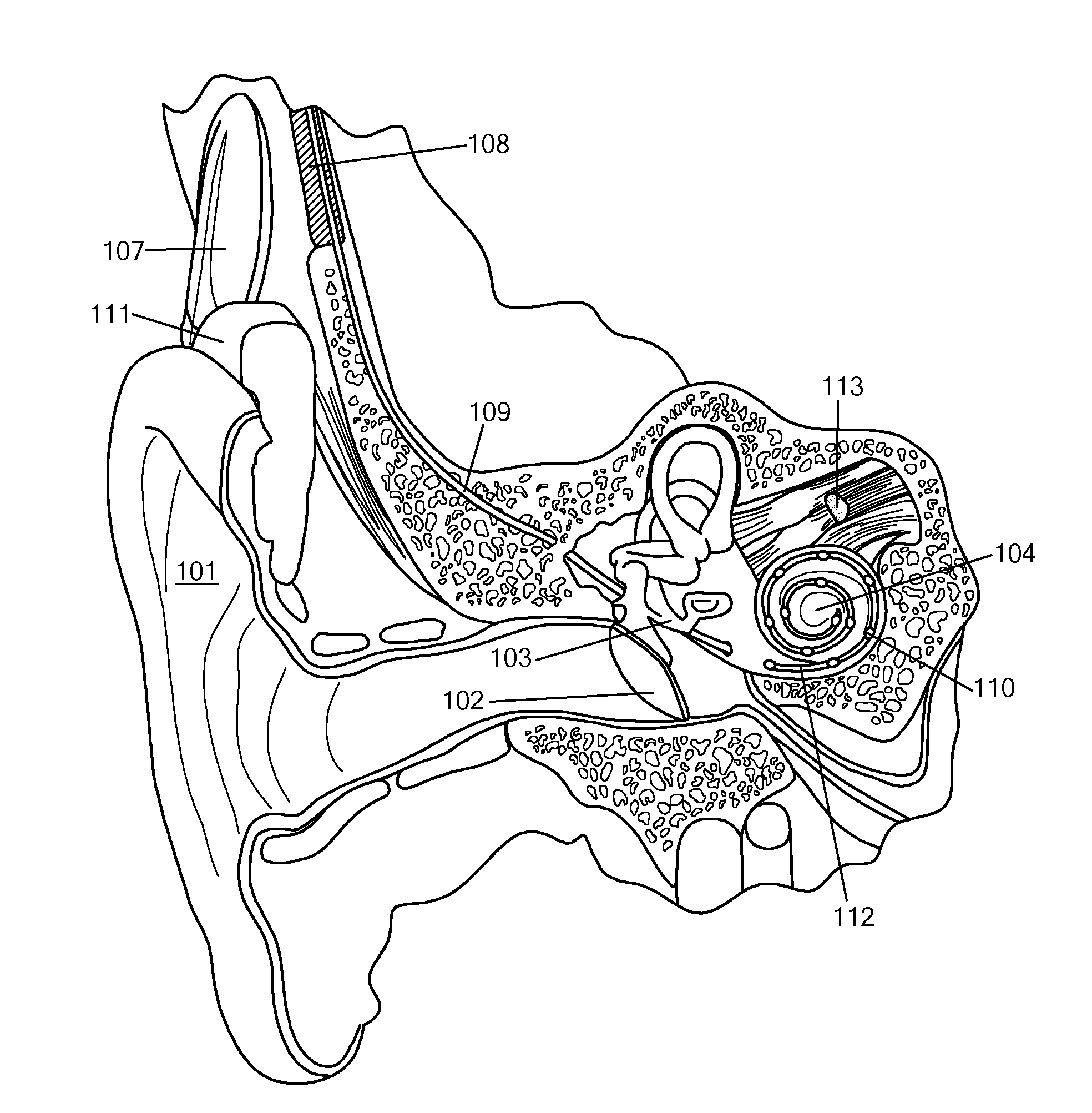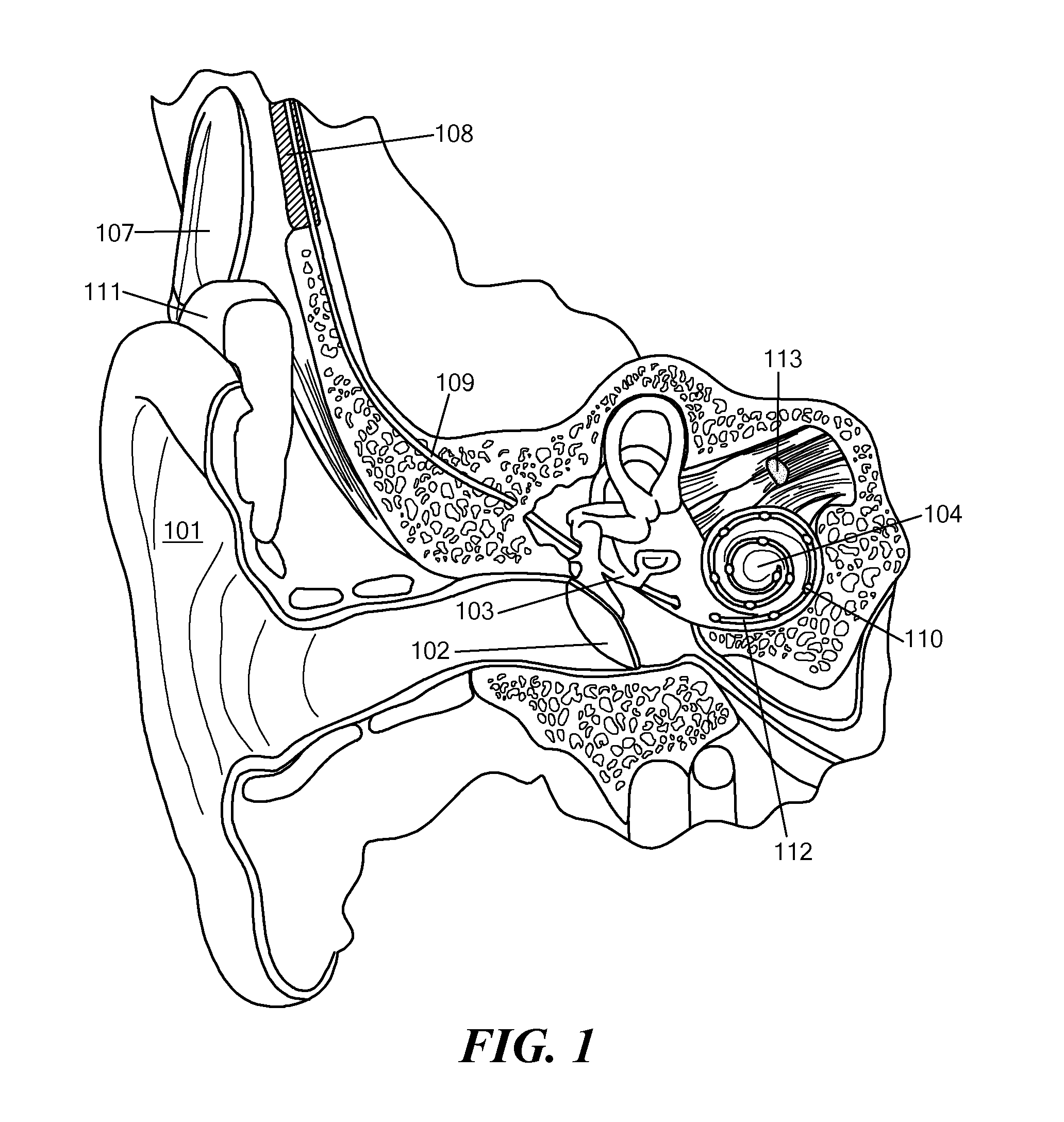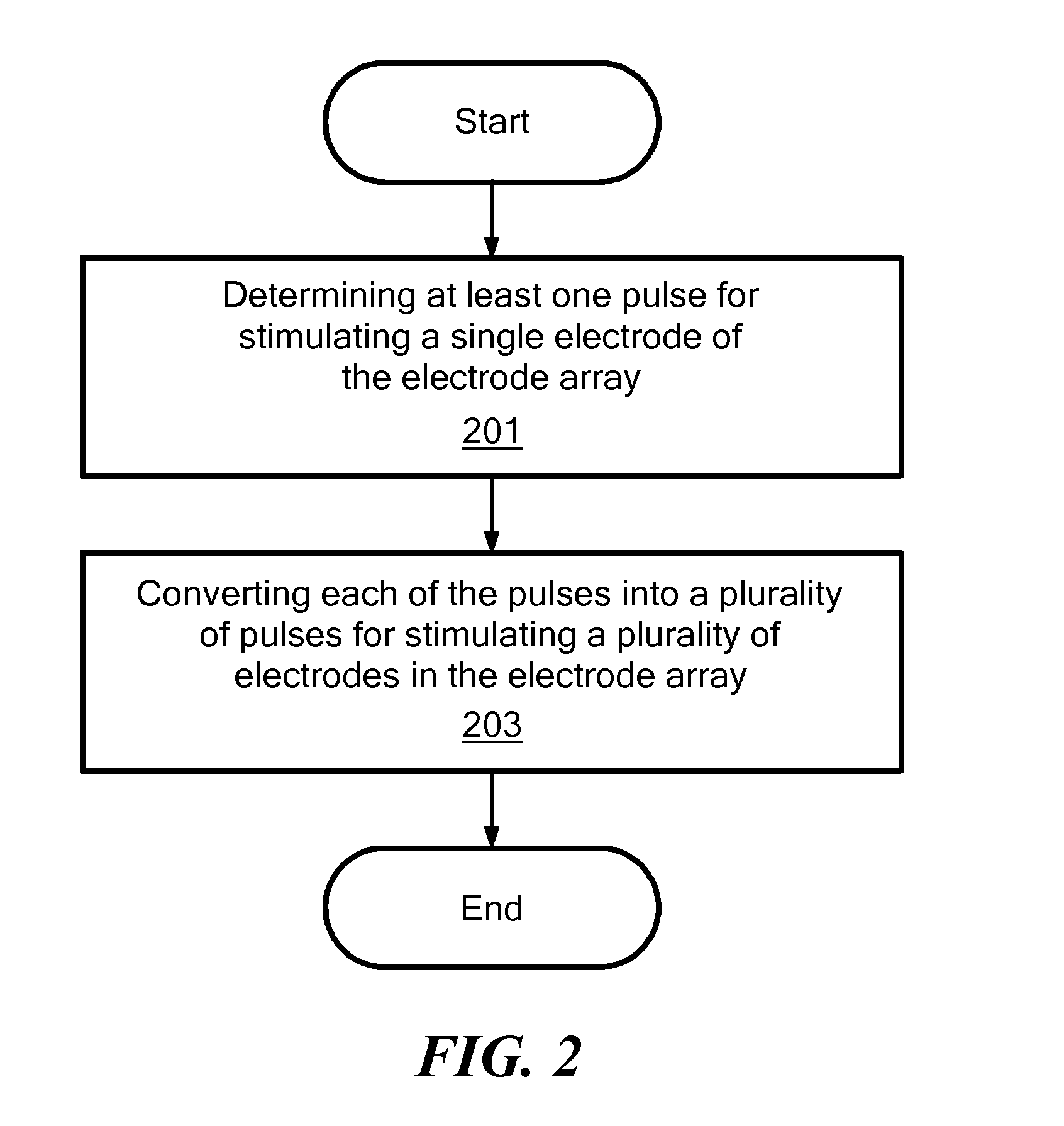Temporal Coding for Hearing Implants
a cochlear implant and coding technology, applied in the field of cochlear implants, can solve the problems of limited temporal coding, weak transfer of temporal information, imperfect representation of temporal information in the auditory system by the use of cochlea implants compared to a normal functioning hearing organ, etc., to achieve enhanced pitch discrimination, enhanced pitch discrimination, and enhanced pitch discrimination
- Summary
- Abstract
- Description
- Claims
- Application Information
AI Technical Summary
Benefits of technology
Problems solved by technology
Method used
Image
Examples
Embodiment Construction
[0008]In accordance with an embodiment of the invention, a method is provided for activating electrodes in a multi-channel electrode array having electrodes that are spatially divided. The method includes determining at least one pulse for stimulating a single electrode of the electrode array. Each of the pulses is converted into a plurality of pulses for stimulating a plurality of electrodes in the electrode array.
[0009]In accordance with related embodiments of the invention, converting may include adding temporal separation between at least two pulses associated with different electrodes. The pulses for stimulating a plurality of electrodes may be at a supra-threshold pulse or a sub-threshold pulse. The energy of the plurality of pulses may be substantially equal to the energy of the pulse for stimulating the first electrode. The temporal and / or spatial center of mass for the plurality of pulses may be substantially equivalent to that of the determined pulse. The plurality of puls...
PUM
 Login to View More
Login to View More Abstract
Description
Claims
Application Information
 Login to View More
Login to View More - Generate Ideas
- Intellectual Property
- Life Sciences
- Materials
- Tech Scout
- Unparalleled Data Quality
- Higher Quality Content
- 60% Fewer Hallucinations
Browse by: Latest US Patents, China's latest patents, Technical Efficacy Thesaurus, Application Domain, Technology Topic, Popular Technical Reports.
© 2025 PatSnap. All rights reserved.Legal|Privacy policy|Modern Slavery Act Transparency Statement|Sitemap|About US| Contact US: help@patsnap.com



